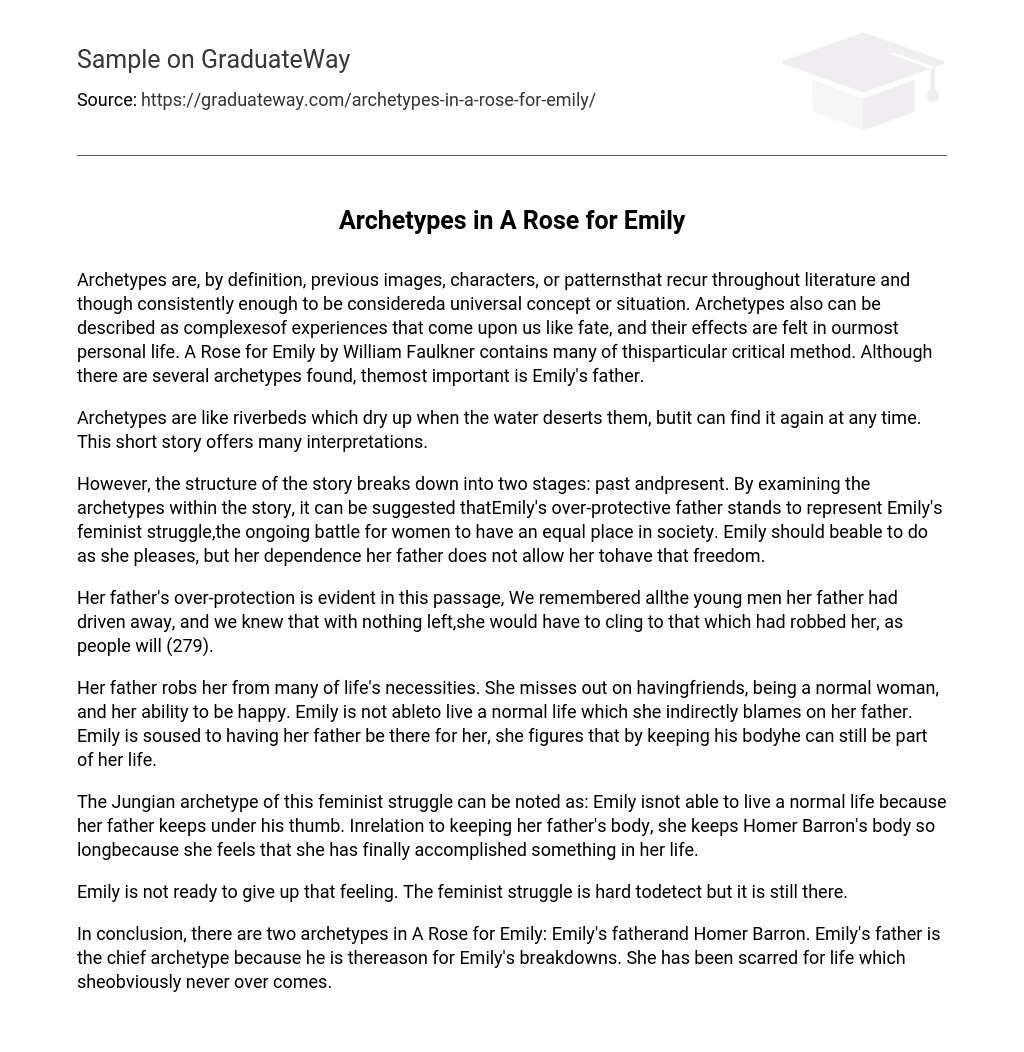Archetypes are, by definition, previous images, characters, or patternsthat recur throughout literature and though consistently enough to be considereda universal concept or situation. Archetypes also can be described as complexesof experiences that come upon us like fate, and their effects are felt in ourmost personal life. A Rose for Emily by William Faulkner contains many of thisparticular critical method. Although there are several archetypes found, themost important is Emily’s father.
Archetypes are like riverbeds which dry up when the water deserts them, butit can find it again at any time. This short story offers many interpretations.
However, the structure of the story breaks down into two stages: past andpresent. By examining the archetypes within the story, it can be suggested thatEmily’s over-protective father stands to represent Emily’s feminist struggle,the ongoing battle for women to have an equal place in society. Emily should beable to do as she pleases, but her dependence her father does not allow her tohave that freedom.
Her father’s over-protection is evident in this passage, We remembered allthe young men her father had driven away, and we knew that with nothing left,she would have to cling to that which had robbed her, as people will (279).
Her father robs her from many of life’s necessities. She misses out on havingfriends, being a normal woman, and her ability to be happy. Emily is not ableto live a normal life which she indirectly blames on her father. Emily is soused to having her father be there for her, she figures that by keeping his bodyhe can still be part of her life.
The Jungian archetype of this feminist struggle can be noted as: Emily isnot able to live a normal life because her father keeps under his thumb. Inrelation to keeping her father’s body, she keeps Homer Barron’s body so longbecause she feels that she has finally accomplished something in her life.
Emily is not ready to give up that feeling. The feminist struggle is hard todetect but it is still there.
In conclusion, there are two archetypes in A Rose for Emily: Emily’s fatherand Homer Barron. Emily’s father is the chief archetype because he is thereason for Emily’s breakdowns. She has been scarred for life which sheobviously never over comes.





